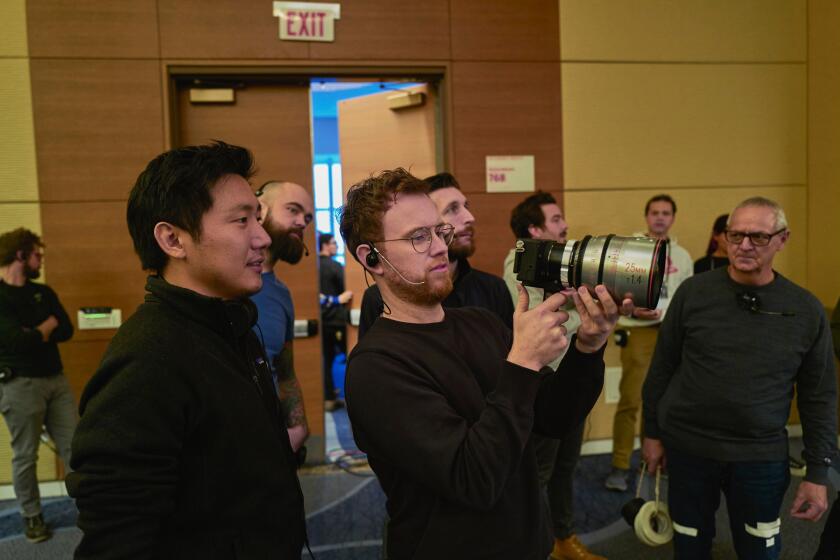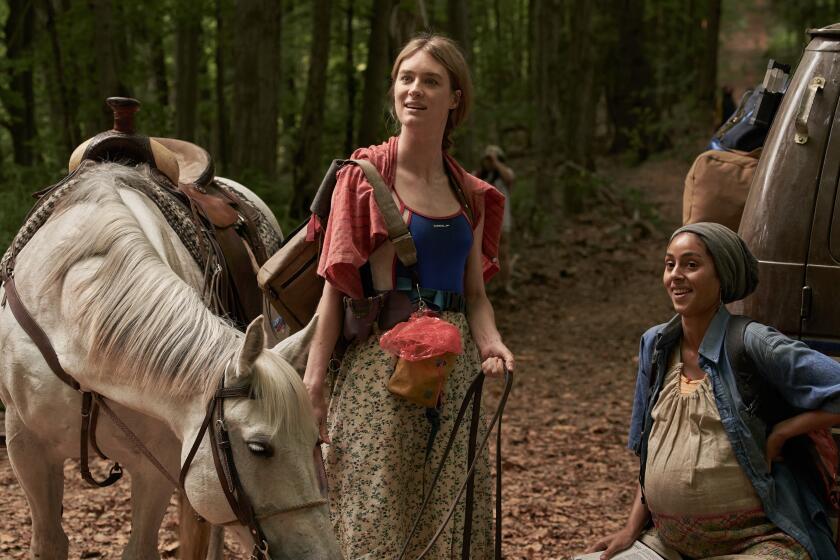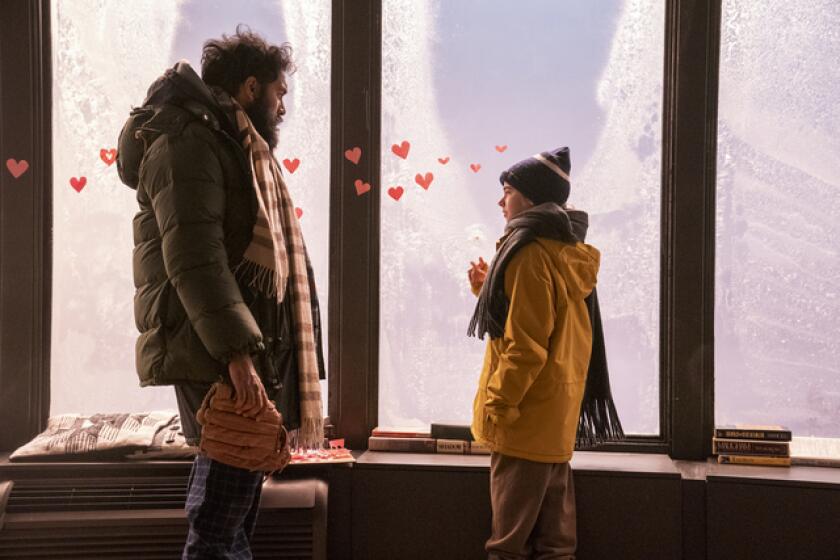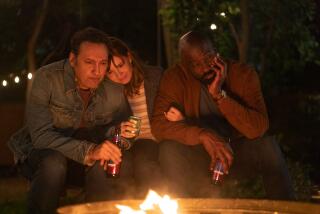Is the pandemic-set ‘Station Eleven’ great TV or not? We fight it out
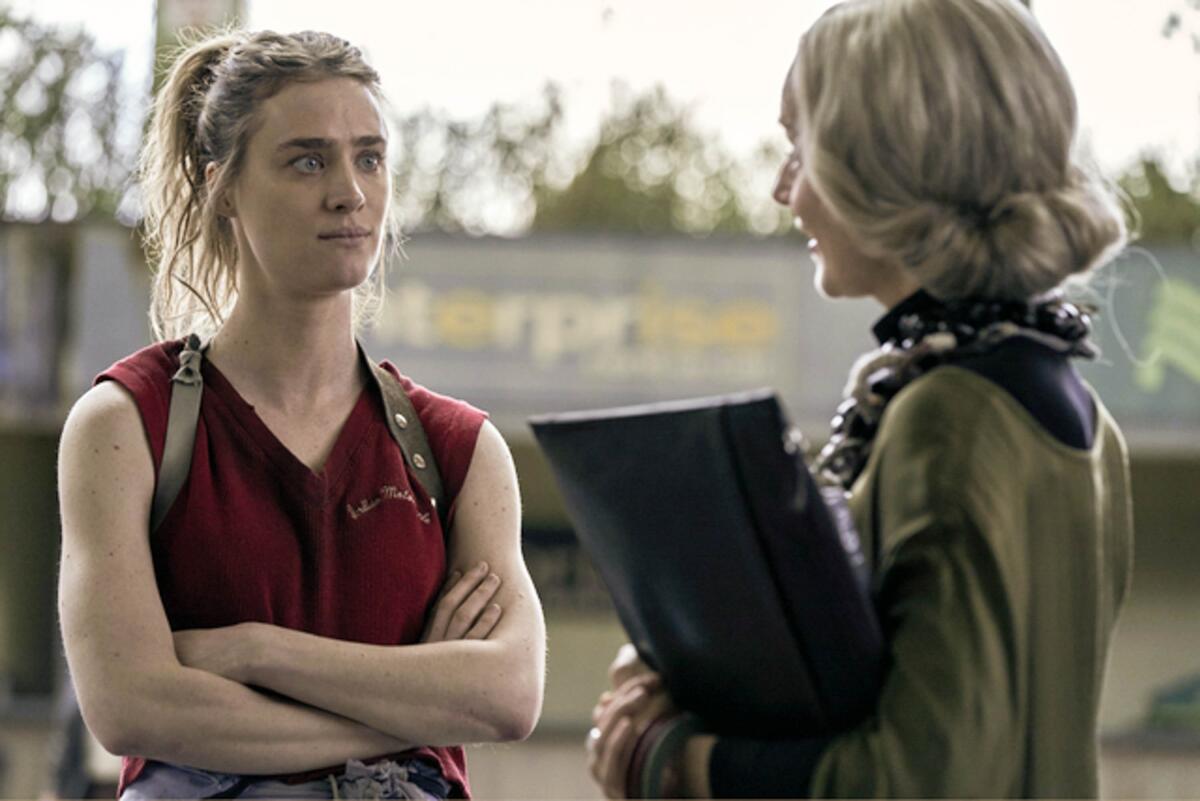
The following contains spoilers from the season finale of “Station Eleven.”
Since its debut last month, “Station Eleven” has drawn both acclaim (from critics including our own Robert Lloyd) and criticism (from fans of the novel on which it’s based, which it changes in key ways). Now, as HBO Max’s tale of a pre-, post- and post-post-apocalyptic society much like our own concludes, senior editor Matt Brennan and columnist and culture critic Mary McNamara have it out about whether the series was truly great — or something less.
The complete guide to home viewing
Get Screen Gab for everything about the TV shows and streaming movies everyone’s talking about.
You may occasionally receive promotional content from the Los Angeles Times.
Matt Brennan: With its emotional finale, “Unbroken Circle,” “Station Eleven” ties off the loose ends in its sprawling narrative: Tyler (Daniel Zovatto), a.k.a. the Prophet, reconciles with his mother (Caitlin FitzGerald); graphic novelist Miranda Carroll (Danielle Deadwyler) meets her fate; Sarah (Lori Petty) shuffles off this mortal coil; and, most importantly, Kirsten (Mackenzie Davis as a adult, Matilda Lawler as a child) reunites with Jeevan (Himesh Patel), capping off one of the most finely wrought love stories in recent TV history. Despite the tidy conclusion, I can only hope creator Patrick Somerville and HBO Max are in negotiations for a second season. Because in stretches the first comes achingly close to being a masterpiece.
Close. But no cigar.
Or, more precisely, it is half masterpiece, half not. In a way, “Station Eleven” is an interesting Rorschach test of apocalyptcism’s appeal. For me, it’s what I’ve taken to calling the series’ “present” — the scenes set around a flu pandemic that wipes out 99% of the world’s population — that vibrate with acute emotional energy. I’d long since grown skeptical of most “topical” art, often so calculated in its conclusions, but as Omicron surged and 2022 plans were suddenly canceled, “Station Eleven” began to feel like the first great screen fiction about the pandemic.
As the season unfurled, though, I found myself frustrated by a structure that, roughly speaking, toggled between the pandemic’s onset and a time, 20 years on, in which Kirsten and her Traveling Symphony have forged a new society through the cyclical performance of plays. Drawn from Emily St. John Mandel’s novel, the series’s speculative future edges up, in its most ill-conceived moments, to a kind of “Walking Dead”-meets-Terrence Malick self-indulgence, and it rarely convinced me, or held me by the throat, the way its speculative present did; I even weighed whether to skip the episodes set along the Wheel, the Great Lakes circle the Symphony traced. (Not to worry, I slogged through.)
I’ve spent the entire season trying to reconcile the above with my deep and abiding affection for the episodes — “Hurricane,” “The Severn City Airport,” “Goodbye My Damaged Home,” “Dr. Chaudhary” — that stuck, as the series has it, to the surprises of “just what happened,” and so actualized our own collapsing civilization through burning houses and corpse jets and big box stores-turned-maternity wards. Bearing the unmistakable mark of “The Leftovers,” the masterful apocalyptic fiction on which Somerville cut his teeth, these installments felt alive to me in a way the others never did.
I admit that it probably says something about where I am at right now that I wanted more of the disaster and less of the hope.
What did you think?
From ‘Station Eleven’ to ‘Atlanta,’ ‘GLOW’ and more, Christian Sprenger has shot some of TV’s most beautiful images. But it wasn’t part of his plan.
Mary McNamara: Given the spiritual undertones of the series, and the repetition of the sentence “I remember damage. And escape,” I am tempted to tell you that whatever imperfections you felt you experienced in “Station Eleven” were deliberate, a kind of cinematic wabi-sabi to remind us that the quest for perfection is not only impossible — it is the wrong quest.
I confess I came to “Station Eleven” reluctantly. Last year, as we all scrambled to create some sort of context for the COVID-19 pandemic, Mandel got all sorts of “what does it feel to have predicted the future?” questions, which seemed very unfair. And though I admire HBO Max for releasing a show about a fictional deadly pandemic in the middle of an actual pandemic (after the show’s production was shut down for months by same), I was not interested in any kind of survival guide. Nor did I want the kind of “There’s Got to Be a Morning After” survival celebration disaster stories so often rely on.
I hadn’t read the book, so I had no idea what I was in for, but I certainly was not prepared for a very young Shakespearean actress trotting around snowy Chicago in her young Goneril costume as the world collapsed. Somewhere around the time Jeevan, her accidental savior, managed to purchase and then bungie-cord together a train of loaded shopping carts and navigate them through many city blocks to his brother’s apartment building, I realized I would either have to surrender to an epic quest and all its potential pitfalls, or not.
The final season of “Game of Thrones” notwithstanding, I remain a big fan of the epic quest, so I chose surrender. In part because the partnership of Jeevan and Kirsten was so odd and hypnotic — that Goneril dress! — but mainly because it quickly became obvious, from the running references to Shakespeare and the (fictional) graphic novel “Station Eleven,” that this story was not about how to survive a pandemic. It was about how art and culture can help people, and civilization, survive complete catastrophe.
As I am Irish, and firmly believe in Thomas Cahill’s premise that Irish monks saved civilization by maintaining texts and libraries while Europe fell into the Dark Ages, I was all in.
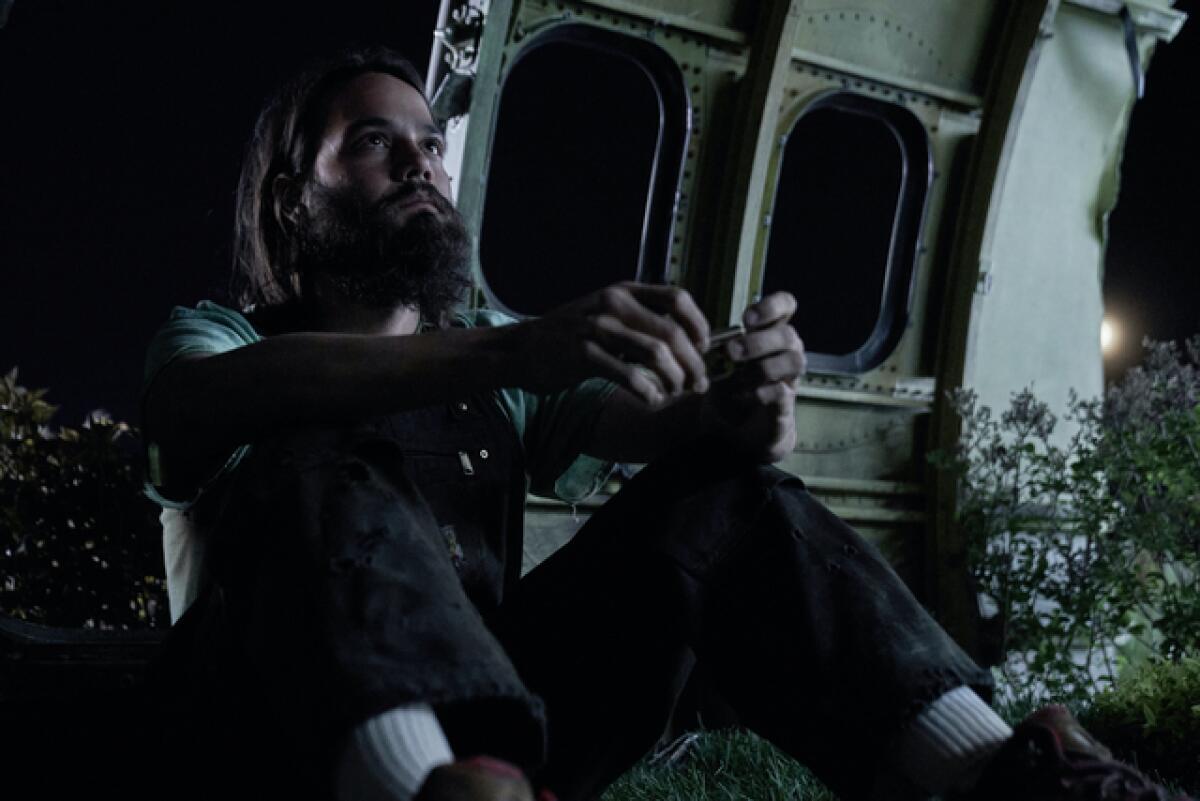
There are holes in the story, but that didn’t bother me because “Station Eleven” felt almost immediately like an antidote to every other post-apocalyptic tale I have ever seen. I have seen many, and characters are almost exclusively categorized as hero, villain, victim but never bard, never artist. (Only the Apple TV+ show “See” takes on the importance of myth and art, albeit in a more controlling, prophetic way, but that pandemic left everyone blind, which brings its own issues.)
What you call “the present” showcases people who are neither hero nor villain, except perhaps in their own minds, but they are artists. Adult Kirsten is, per the Katniss Everdeen amendment to the Geneva Convention, a skilled knife thrower and general badass, but she is also the company’s go-to Hamlet, surrounded by a group of people who survived without surrendering their belief in the power of making beautiful things. Even the guy who “auditions” by reciting Bill Pullman’s speech from “Independence Day” believes.
The mere existence of a character like the Conductor, played with bug-eyed, Emmy-worthy brilliance by Petty, made my heart sing. She was the leader of a band of survivors not because she was a ruthless martial arts expert but because she continued to write symphonies, and understood that music and theater fulfill a deep-seated need. “We try to make the world make sense for a minute,” she explains to young Kirsten.
I loved “Station Eleven” because it is the first post-apocalyptic show that revolves around its own holy text, in this case the hypnotic, possibly prophetic, graphic novel “Station Eleven.” We see its origins as, in flashback, Miranda (with Deadwyler in an equally devastating performance), turns her own experience with trauma and loss into a sort of universal language that connects the past with the future and literally helps save civilization.
I definitely had some questions in the end — the Prophet’s use of children as suicide bombers was never really addressed — but I was frankly astonished that Somerville was able to keep so many balls — themes, characters, flashbacks, contexts, relationships — in the air, never mind land them with such optimism and grace. You had to be impressed by that at least. I mean, extra points for level of difficulty, no?
Author Emily St. John Mandel was not involved in the adaptation of her hit novel. But series creator Patrick Somerville had her blessing to change it.
Brennan: Look, I’m not calling “Station Eleven” a failure, or a disaster, or even a half-assed genre entry. I’m calling it a partial masterpiece! And one that in its most poignant moments reaches the same depths of emotion as the greatest television dramas: as “Beasts of the Southern Wild” composer Dan Romer’s roadside jug-band score measures the heartbeat of the end of the world; as the camera catches the glimmer of tears in Tyler’s eyes during that final performance of “Hamlet”; as an impromptu rap song or homemade costume render the pain of the human condition at a single human’s scale. This is the half of “Station Eleven” that persuades me, the half set in the realm of its “Hamlet,” its “Lear”: the half about human connection and isolation, about love, betrayal and, unavoidably, collapse.
But I fear the social future “Station Eleven” imagines is implausible, if not disingenuous. There is nothing in the history of human endeavor, not the Bible, Shakespeare or the annals of HBO, to suggest that we are capable of the regeneration it depicts in the span of one lifetime, much less 20 years. Watching it from the perspective of our own existential crisis — a devastating pandemic and a climate apocalypse, each worsened by the twilight of democracy — I was struck by the notion that only those who come of age in a time of optimism can draw the conclusion that “progress” is our natural state; for others (hello, fellow millennials!), entropy reigns. I even caught myself asking a blasphemous question: If art were truly capable of saving us, wouldn’t we already have been saved?
This reaction, of course, is a reflection of our own “present,” in which art seems to swim ceaselessly against the tide. Still, my sense that the series is too Pollyanna-ish for its own good — that its conclusions about the uses of art in the world are ultimately unearned — stems from the fact that these sections are often dramatically inert to begin with. The generation gap between those born “before” and “after” is gestured at but scarcely plumbed. The question of class distinctions (resource hoarding) is left mostly to an episode’s worth of country-club symbolism and a ruinously miscast David Cross. The “red bandanas” turn up and disappear in one fell swoop to provide a cliffhanger between episodes; ditto the strained “mystery” of the the Prophet. To believe that the series is guilty of doubtful creative choices is not to spurn art — it’s to know what it’s capable of and to expect more of it.
If one of the precepts of the series’ own “holy text,” a graphic novel, is “show, don’t tell,” it seems to me indicative of the series’ strengths that its most moving moments feature spliced-in images, memories, of the characters’ former selves. It began to read to me as a tacit acknowledgement that its vision of the future is not as immersive as its vision of the present or past. And during the montage of embraces between Jeevan and Kirsten near the end of “Dr. Chaudhary,” it finally clicked: “Station Eleven” soars when it rejects the mantra “There is no before” — when it acknowledges that the future is a science fiction.
Because in the now, “the before” is all we have.
Flawed but engrossing, the craft of HBO Max’s post-post-apocalyptic tale masks its narrative imperfections: As in the Bard, plot gives way to poetry.
McNamara: As a nonmillennial I’m not going to dive into those murky generation-defined existential waters, debate the historical nature of “progress” or try to predict the fate of democracy, though I think we can agree any television show that sparks debate about those things is a damn good television show.
As for the issue of whether or not art has “saved” us, there is no way of knowing, though it certainly has functioned, at the very least, like the COVID-19 vaccinations — incapable of eradicating evil but allowing more people to survive it.
Does “Station Eleven” depict an unrealistic social “regeneration”? Maybe, though people appear to be living in small, mostly primitive communities and the fact that the story confines itself to the shoreline of Lake Michigan (at least I think it’s Michigan) serves the narrative both spiritually and logistically. I did find it hilarious that, during the winter flashback, the roads were plowed, a sleight of hand Somerville admits was necessary for production to continue. But I also know that if any survivor owned a snowplow, he or she would use it because snowplowing is a calling and an art form in itself.
You are right about how the timeframe jumps from immediate crisis to a relatively established recovery. I certainly did not quite understand why Jeevan chose to take Kirsten out into the Chicago winter rather than do a bit more exploring in that very large apartment building. Yes, there were dangers there, but no doubt there was also a lot of food and, potentially, fellow nonmurderous survivors.
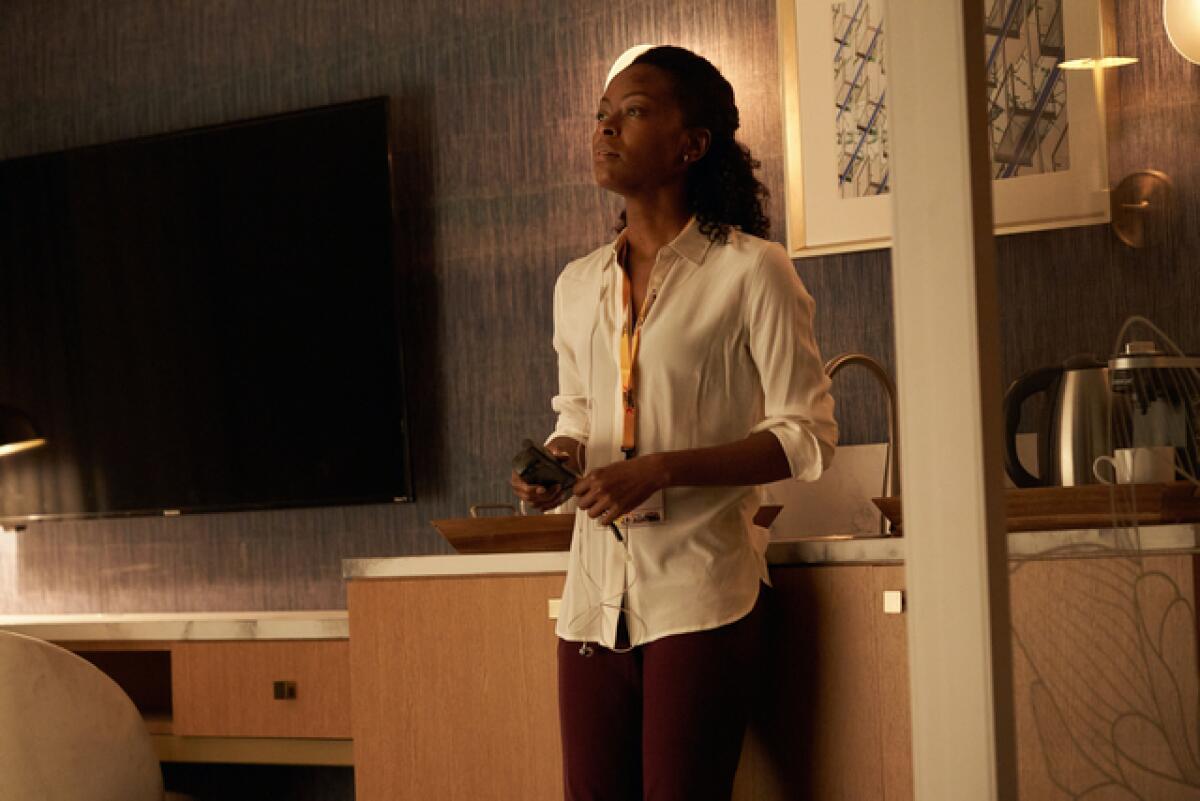
But then why did the One Ring choose Frodo? (Sorry, it all always comes back to “Lord of the Rings.”) Because this is an epic quest and those kinds of stories make certain demands. Yes, “Station Eleven” is wildly optimistic and unapologetically sentimental, but I appreciated the problem-solving we did see — the airport community, as you mentioned, and the golf resort, even the Symphony’s decision to stay within the Wheel for safety reasons. Frankly I was grateful to skip all the store-looting and scavenging we are inevitably treated to in these kinds of tales. Instead we got a department store turned into a maternity ward and an Oreo used to demonstrate a cervix dilated to five centimeters. That episode, which straddles the before and the after, was totally crazy and completely glorious; of course some female doctor would create a maternity ward in a place that once sold beds. The scene in which a dozen women give birth was the before giving way to the future, just as all the scenes in which Miranda struggles to write “Station Eleven” were.
One of the things that drove me away from “The Walking Dead” was the core characters’ lack of expertise and inability to problem-solve. Why, I kept asking myself, are they still living on the ground? Zombies show no talent for climbing; is there no engineer or architect among them who could construct an elevated village? The Swiss Family Robinson managed, and they were mostly kids!
Obviously, it is a narrative cheat to just slide on by all the work and infighting that went into creating those communities, but that isn’t what “Station Eleven” is about. Instead of examining all the light/dark political dynamics of rebuilding a post-catastrophe society, it concedes that capturing mass trauma is impossible — and potentially unhelpful. Every individual experiences what she or he experiences and deals with it in a different way. Art and literature can, the series argues, offer some safety rails, some moments of connection.
Which may be enough.
More to Read
The complete guide to home viewing
Get Screen Gab for everything about the TV shows and streaming movies everyone’s talking about.
You may occasionally receive promotional content from the Los Angeles Times.
